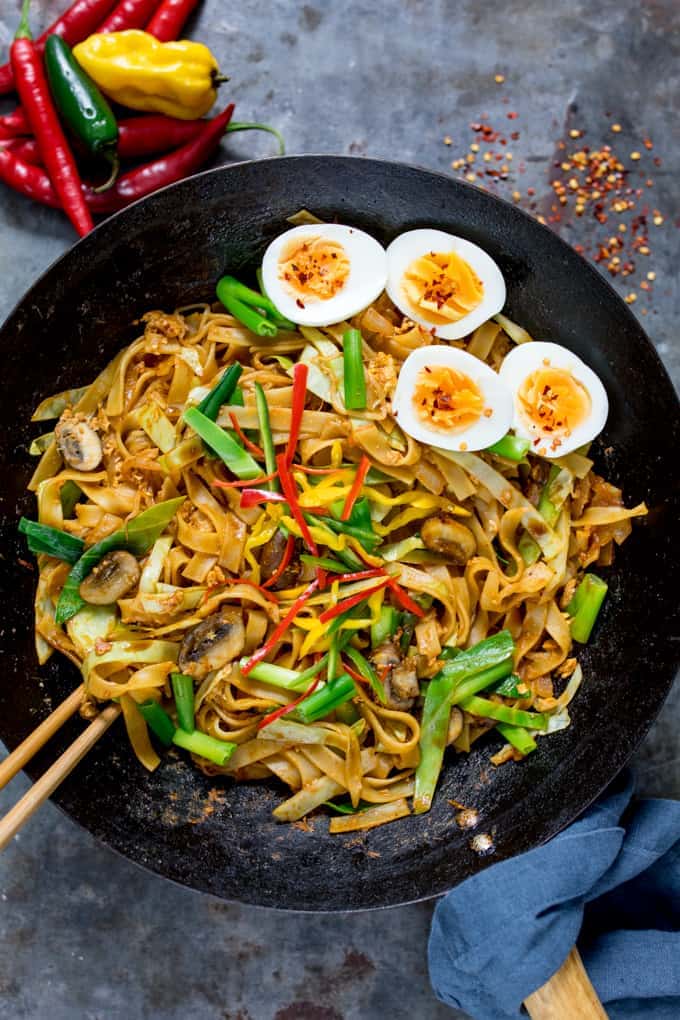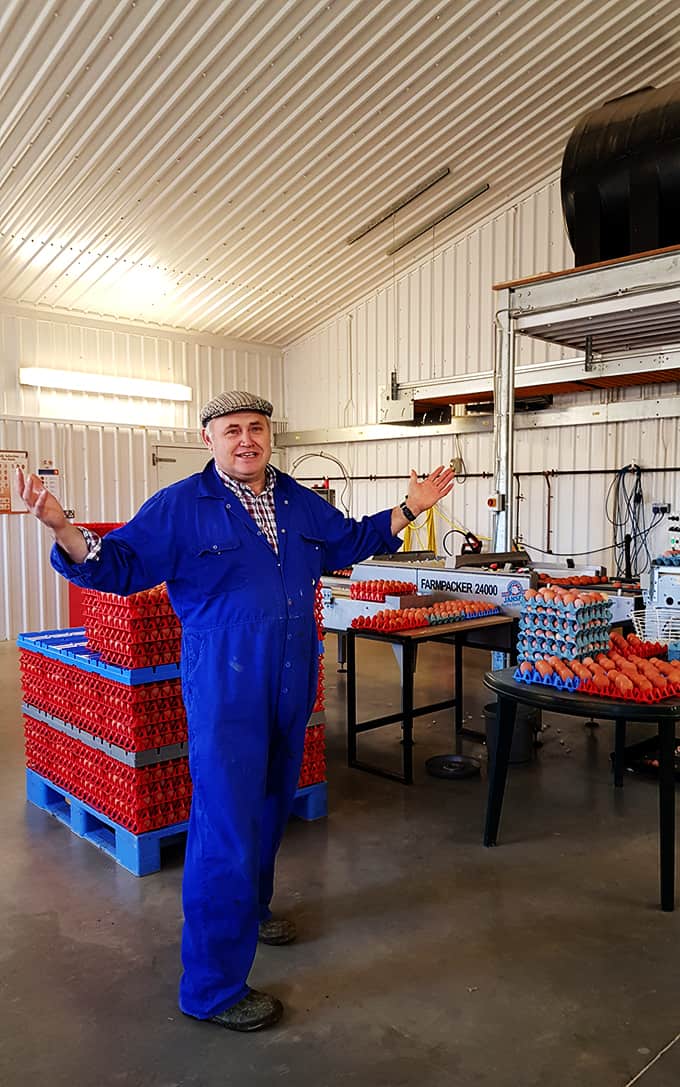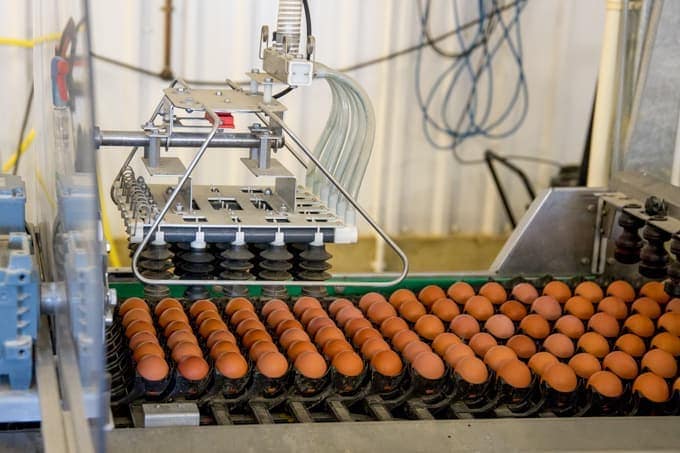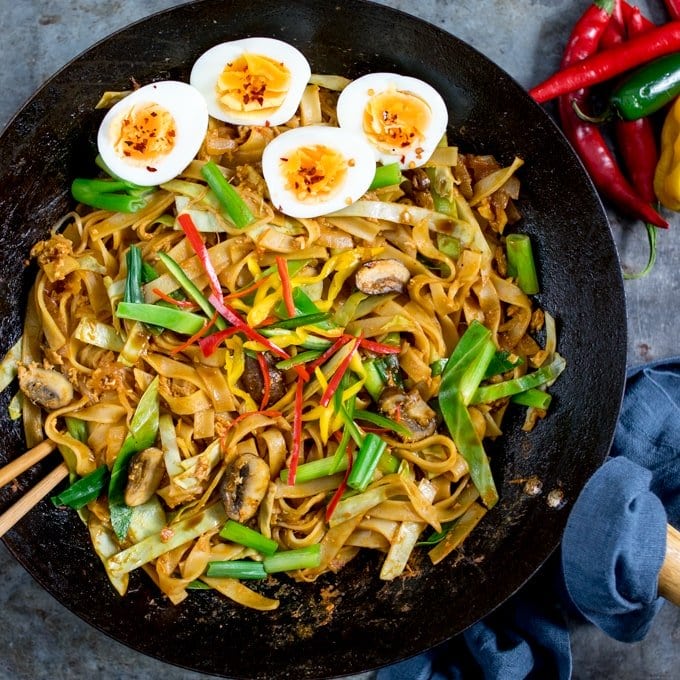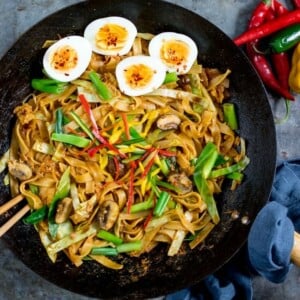This post is sponsored by the happy egg.co All opinions are my my own. Stuffed mushrooms on Wednesday, followed by a vegetarian noodle dish today. Nicky what’s happening!! I’ll have to make meaturduckballizza next, just to convince you I’ve not gone vegetarian. If you don’t have to sit through kid’s TV shows like I do (ok, I like some of them really), the meaturduckballizza is Hank’s - from The Thunderman’s - dream dish. Consisting of meatloaf, wrapped in turkey, wrapped in duck, wrapped in meatballs wrapped in pizza. I have a feeling Chris would eat that if I put it in front of him 🙂 As it happened he wolfed down this veggie dish very happily. No request for bacon or anything! I’m always looking for quick, meat-free dinners that work for a busy weeknights. When Happy Eggs contacted me to see if we would like to visit one of their farms in Peterborough, an egg dinner recipe jumped out at me (the several boxes of eggs we went home with helped too!).
The journey down to Peterborough started at 5:30am with a two-and-a-half-hour drive. We were met by grandad Tony who introduced us to the farm and the story behind their family business over a nice cup of tea. We donned our overalls and wellies (whaddayathink? ???? )
and Tony’s grandson Sam drove us over to the chickens in the tractor trailer. We arrived at the main building where the eggs that had been collected that morning were being sorted. The farmer talked of their routine and the how they settle the chickens into their new home when they arrive.
After that, we were taken to visit the chickens! Altogether they had 16,000 chickens over four different sections of the huge building. Each section will has four levels for the chickens to move around, as well as enrichment toys for the inquisitive chickens to play with. My initial thought when I first walked in was ‘wow, that’s a lot of chickens!’ First impressions can make it seem that they’re a little bunched in together, but actually there was a lot of empty space, and all of the hatches were open for the chickens to go in and out freely during daylight hours. After walking through each of the four areas, it quickly became obvious that the chickens like being close to each other. They gather together, following each other around, and if you stand in one spot for more than 5 seconds, they’ll surround you too. The chickens looked gorgeously fluffy and healthy, and were very friendly, walking in between everyone’s legs, having the odd nibble at wellies, and even jumping on the farmer’s shoulder every so often for a quick perch. I thought that many birds would result in a bit of a stinky environment, but actually everywhere looked pretty spotless. The sheds use a conveyor belt system that collects droppings for manure and can be easily cleaned and disinfected. There was also a good airflow system within the building, keeping everywhere at a comfortable temperature with a gentle breeze throughout. They had food and water on tap, and a private curtained-off laying area that they could access whenever they wanted. Since the chickens were quite young, the farmer was still training them to go to the laying area - simply by lifting them up to the right level every so often, so they could get used to their environment. The laying area is very slightly sloped, so the eggs gently roll down to the another belt that moves the eggs to the sorting area.
Although most of the chickens were laying in there, we had fun finding a few eggs in different places around the building (at one point the farmer and his wife were walking around, picking up 1000 eggs a day by hand!). After our inside tour, we ventured outside to the huge grassy fields that the chickens could graze around. It was quite a bright day, so there weren’t a lot of chickens outside (they prefer overcast days), but more followed us out as we went outside.
The farm recently had a student working with them, helping to find ways to make the chickens more comfortable to go outside. They’d made covered tunnels from the building to the fields, plus other covered wooden structures. The next field over had cows - which the farmer explained were great companion animals for the chickens. At first the cows weren’t keen on the chickens approaching them, but they soon get used to it, and the chickens love to hang around them.
It was easy to see the chickens were happy in their surroundings, and equally, the farmers love what they do, and take great pride in managing their farm and ensuring the chickens are content. Of course, as with any farm that raises animals for the products they provide for consumption, it’s not a fairytale, and I also wanted to hear responses on some of the more hard-to-answer questions. i.e - How long are the chickens kept for? What happens with the chickens after they pass their peak of egg laying? What happens when a chicken is sick? The answers to these question were a more difficult part of the tour, but I was relieved to find that they were very open, and responsive to answering any question put to them.
We were told the chickens are only kept for one laying cycle - around 14 months. After this time, the quality and quantity of the eggs diminishes. The chickens at this point, are generally then used for food use (although not sold as the whole chickens you see in supermarkets). For sick birds, they have a smaller pen, where a sick chicken can be treated. We saw the (empty) sick pen on our tour - situated within the main shed, but apart from the rest of the chickens. I also considered asking more about the father company who owns Happy Eggs - as I had heard they have another company for caged chickens. I would never buy eggs from caged chickes, but on the tour, I came to the conclusion that rather than grilling the people at Happy Eggs - who obviously care greatly about the welfare of their chickens - it’s all the more important to continue buying (and encouraging other people to buy) free-range eggs. The more this message is spread, and the more people who buy free-range, means a reduced market (leading to no market!) for caged chickens. Ok, let’s get back to the eggs themselves and the rest of the day. After our tour, we were treated to a delicious egg-based brunch. We started off with
Chorizo and Feta frittata with a tangy red pepper dressing. Next was a Scotch egg with turmeric mayonanaise and perfectly pickled vegetables. After than we were served a belly-warming spiced shakshuka. And finally (I was full by this point, but couldn’t help but eat it all!) we finished with a lemon tart with pistachio and blueberry jam:
Everything was expertly (notice I spared you the pun there!) prepared - lots of Mmmmms around the table! We went home armed with a nice supply of Happy eggs, which led to my speedy egg dinner recipe 🙂
I’m happy to say the visit was highly enjoyable and enlightening, and my Vegetarian Kway Teow super delicious!
The Recipe:
